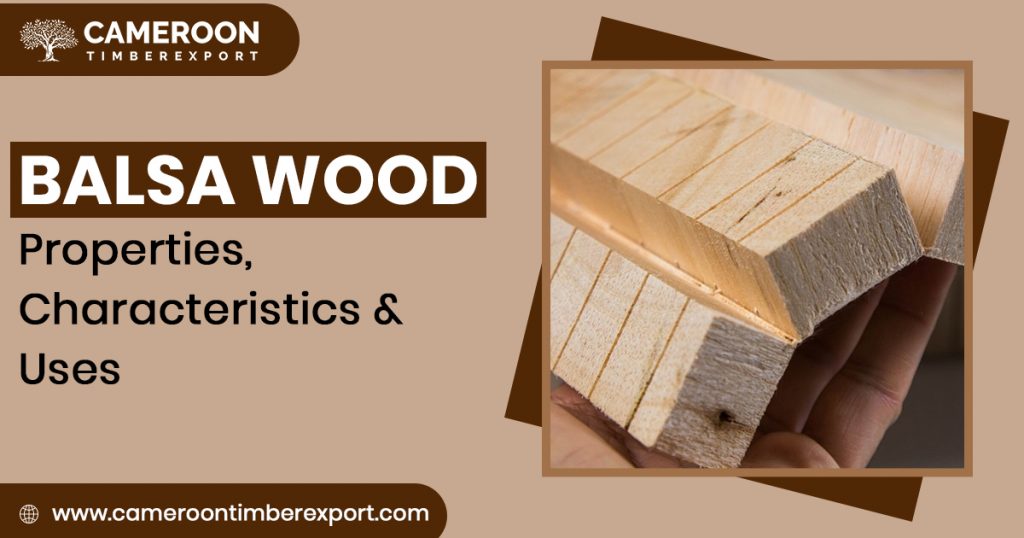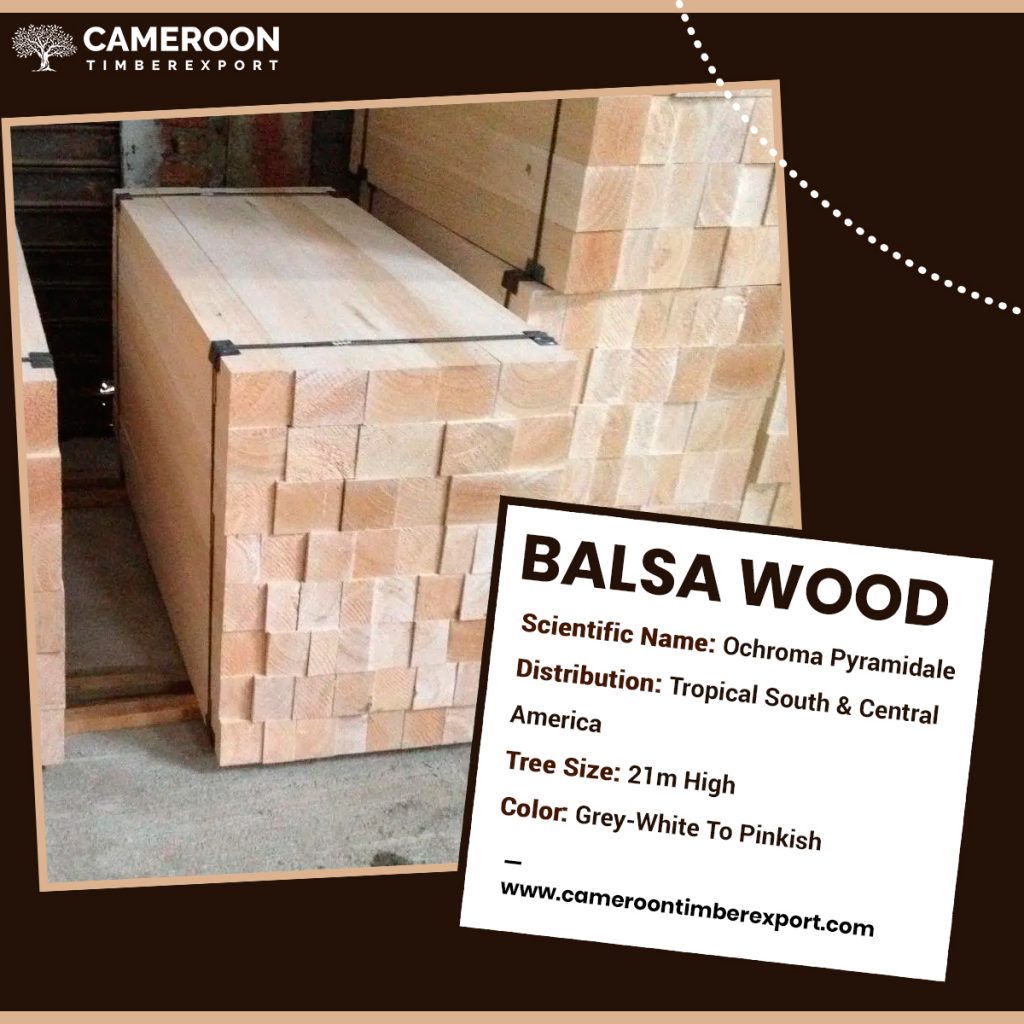Balsa, commonly known as Ochroma, is a hardwood native to the tropical forests of the Americas. Balsa trees are also grown on plantations in many countries including Papua New Guinea, Solomon Islands, Indonesia, Thailand, etc. Despite being hardwood, Balsa is rather soft and light and these properties of balsa wood makes it suitable for a large variety of applications ranging from model building to construction of boats and aircrafts, furniture making, insulation, sports parts construction, musical instruments, carving and more.
Whether you are looking to purchase Balsa wood or are just curious about this harwood’s properties and uses, here you can read everything you need to know about Balsa wood.
Balsa Wood Properties
Balsa trees grow fast and will usually reach a height of 18-28 m. They have a trunk diameter of around 1-1.2 meter. A typical Balsa tree takes about 10-15 years to fully grow. They start flowering in the third year. Though these trees are native to America’s tropical regions, they can also be found in many other countries.
Strength, density and durability: Balsa has a Janka rating of 67 lbf, which is typically low for a hardwood. The average dried weight is 9 lbs/ft3. Balsa is lightweight and not very hard. It is prone to insect attacks and has low durability.
Color: Balsa heartwood is easily distinguishable from the sapwood. While the heartwood is pale reddish brown, the sapwood is white or off-white with a pink yellowish hue.
Because Balsa is soft, it’s use in commercial lumber is not very common.
Grain & Texture: Balsa wood features a straight grain and may have a medium or coarse texture. The wood is diffuse-porous and will generally have large pores.
Workability: Balsa is generally easy to work with. Because it is soft, it cuts easily and causes no blunting or dulling effect on cutters. It does not hold nails easily, which is why glue is used for joining. The wood stains well but can take a huge amount of paint to finish because of its liquid absorbing nature.
Availability & price: Balsa is easily available and moderately priced. However, high-quality Balsa wood can be difficult to find in typica hardwood stores and can cost more at specialty stores.
Common Uses of Balsa Wood
Though Balsa is very soft and light, it is reasonably strong, which makes it suitable for a range of works. Low density Balsa is high in demand. It is primarily used in model building, i.e. to build models and proptypes for bridges, aircrafts and other projects where high strength and bending abilities are needed. It is also sometimes used in building full-sized wooden airplanes because of its light weight and high strength.
Balsa was first used in aircraft building in the second world war, as it was a component of the de Havilland Mosquito aircraft created by Britain during the war. Other than aircraft building, Balsa wood is also largely used in building boats that are light in weight.
Balsa is also commonly used for building plywoods that are both stronger and lighter than regular woods.
Other than that, Balsa timber wood is used for making wooden crankbaits, for insulation in houses with damp walls and sometimes in refrigerators, to make breakable furniture (for use in films and karate), and to build sports parts including badminton rackets and musical instruments such as violin. Balsa is also used for carving. Because the wood is soft, it carves easily.
Advantages & Disadvantages of Balsa Wood
When choosing wood for your project, make sure to also check the various advantages and disadvantages of that wood to know whether it is perfect for your particular needs. Here are the different pros and cons of Balsa wood.
Pros (Why use Ochroma wood)
- It is a light wood and ideal for model making.
- It is light and therefore perfect for making boats.
- Balsa trees grow fast, which is why they are a common choice for plantation.
- It is affordable and easily available.
- It is fairly strong for its density and weight.
- Balsa stains, cuts, glues and finishes well.
Cons
- Balsa is not a very durable wood. It is not suitable for making heavy-use and outdoor furniture.
- The wood burns quickly if exposed to fire.
- It is susceptible to insect attacks.
Balsa wood comes in different grades. The properties of the wood also depend on how it is cut. For example, A-grain Balsa has the best bending properties, while C-grain wood offers better stiffness.
Need help choosing the right wood for your project? Contact us today for a free on-call consultation. If you are looking to buy Balsa wood, contact CameroonTimberExportSarl for the best price. We ship to all countries and cities around the world.


